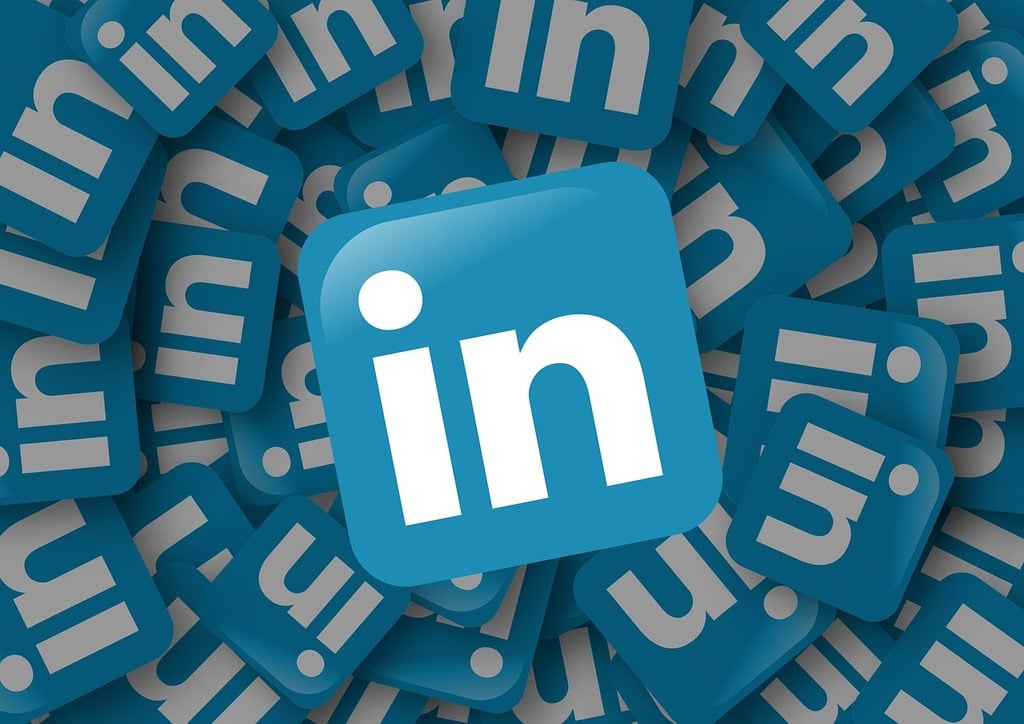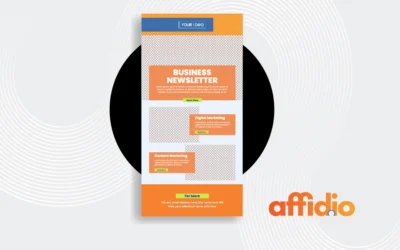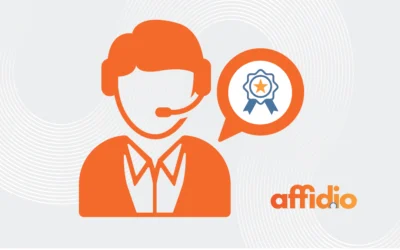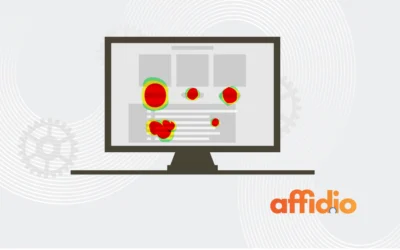So you’re trying to figure out this whole LinkedIn lead generation thing, right? It feels like everyone’s talking about it, but maybe you’re not seeing the results you expected. You are definitely not alone in feeling that way.
Many marketers and influencers might focus heavily on other platforms. They might pour effort into Facebook ads or Instagram campaigns. But LinkedIn often gets overlooked, seen just as a place for job hunting and professional networking.
But here’s the scoop: LinkedIn is actually a goldmine for finding potential customers, especially if you’re selling to other businesses (B2B). You just need the right approach, a solid `generation strategy`, to make your `LinkedIn lead generation efforts` pay off and `generate leads` effectively.
Table Of Contents:
- Why LinkedIn is a Powerhouse for Getting Leads
- Setting the Stage: Your LinkedIn Foundation
- Crafting Content That Attracts and Converts
- Tools and Tactics for Effective LinkedIn Lead Generation
- Measuring Success and Keeping Things Aligned
- Conclusion
Why LinkedIn is a Powerhouse for Getting Leads
Let’s be clear: LinkedIn is absolutely a fantastic platform for generating leads, creating significant `LinkedIn sales` opportunities. Many people in the B2B marketing space already know this well. Still, lots of folks don’t really have a solid `lead generation strategy` in place for their `LinkedIn account`.
They might not put much thought into their `LinkedIn post` frequency or the content of their `LinkedIn ads`. Maybe they skip things like retargeting `potential customers` who visited their `LinkedIn profile`. It’s easy to fall into the trap of thinking LinkedIn is just a digital resume holder rather than a dynamic `social media` platform for business growth.
But think about who uses LinkedIn regularly. You find company leaders, decision-makers, professionals from various industries, and your ideal `target audience` actively looking for solutions and connections. These are the people with influence and buying power, making LinkedIn a hub for `qualified leads`, something many businesses recognize.
Using a powerful `generation tool` like `LinkedIn sales navigator` can further refine your search for these key individuals. Tap into LinkedIn’s network. Connect with those who control the purse strings and watch your market share climb. This direct line can sometimes make closing deals smoother, turning `LinkedIn leads` into `warm leads` faster.
Setting the Stage: Your LinkedIn Foundation
Before you jump into actively generating leads, you need to get your house in order. Think of it like building a solid foundation before constructing a house. A weak base means everything else, including your `Linkedin lead generation` plan, might crumble.
Polish Your Company’s LinkedIn Page
First things first: your company’s LinkedIn page needs to look sharp and professional. You really don’t get a second chance to make that first impression online. If someone hears about your business and is interested, their first stop might be your `LinkedIn profile` or company page.
You want that page to immediately tell visitors who you are, what you do, and why you’re good at it. Pay attention to everything: your logo, your cover image, the “About” section, and ensure accurate `contact info` is available. Make sure it clearly communicates your company’s value proposition and maintains a professional appearance, strengthening your `LinkedIn marketing`.
Don’t just set it and forget it, either; consistent updates are crucial for `LinkedIn lead generation efforts`. Keep it updated with recent news, insights, client successes, or even a relevant `case study`. An active, polished page encourages `potential customers` to take the next step and reach out, making it a key part of your `generation strategy`.
Get Your Team Involved
Your employees are one of your biggest, often untapped, marketing assets for `LinkedIn lead generation`. Seriously, start with them. Encourage your team members, especially those in leadership or roles within the `sales team`, to actively use their `LinkedIn profiles`.
Ask them to share company updates, blog posts, or relevant industry news through their own connections. They can also join and participate in a relevant `LinkedIn group` or several `LinkedIn groups` related to your industry. Think about the collective network your team possesses – it’s likely huge and full of potential `qualified leads`.
Some of their connections could be perfect `potential customers` who might not find your company page otherwise. Authenticity is key. When your employees share company content, it’s like they’re giving a personal recommendation—it’s more convincing than any ad campaign. People connect with your brand more when they feel it’s genuine. Make sure your team understands the company mission and feels motivated to represent it online effectively, contributing positively to `lead generation efforts`.
Crafting Content That Attracts and Converts
Okay, your `LinkedIn profile` looks great and your team is on board. Now, what do you actually *post*? Having a plan for your content is vital for consistent `LinkedIn lead generation` and nurturing `LinkedIn leads`.
Develop a Smart Content Strategy
What kind of stuff should you share? How often should you post? Think about who you’re trying to reach – your `buyer persona` – and what they care about; your content needs to give value, not just sell hard.
Engagement is key; your audience needs to stay with you. Think about how to keep them involved from beginning to end. Share brief company news, handy tips, and interesting blog posts from your website. Longer articles published directly on LinkedIn can position you as a thought leader, attracting organic `LinkedIn leads`. Videos and infographics also tend to perform well within a `LinkedIn campaign`.
The key is consistency and relevance in every `LinkedIn post`. Plan out a content calendar, even a simple one, for your `LinkedIn marketing` efforts. Make sure what you share aligns with your business goals and the products or services you offer, helping you `generate leads` aligned with your offerings, as content marketing experts always advise.
Engage, Engage, Engage.
Posting content is only half the battle in `LinkedIn lead generation`. Don’t be a wallflower; participate in the platform’s community. Remember, `social media` is built on interaction.
If someone comments on your `LinkedIn post`, reply to them. Ask questions to get more information, say thanks for their input, and get a lively discussion going. If someone shares your content, acknowledge it; this simple interaction can build goodwill and increase your visibility for `lead generation`.
Join relevant `LinkedIn groups` and participate in discussions genuinely, focusing on adding value rather than direct selling. Don’t just drop links to your website; offer helpful advice and insights first. Building relationships through engagement makes people more receptive when you eventually initiate `LinkedIn outreach` or talk business.
Using Sponsored Content Strategically
Sometimes, you need to give your content an extra push to accelerate your `LinkedIn lead generation`. That’s where sponsored content and `LinkedIn ads` come in. Paying LinkedIn to promote your posts helps you reach a wider, specific `target audience` faster than organic reach alone.
You can promote successful posts, share specific offers, or drive traffic to a landing page designed for `lead gen`. LinkedIn offers detailed targeting options, letting you reach specific industries, job titles, company sizes, and more, sometimes proving more effective for B2B than `facebook ads`. This precision helps make sure your marketing dollars are spent reaching the right people who could become `qualified leads`.
Using `sponsored content` can also help position your company as a leader. You’re clearly dedicated to helping the community learn; that’s what sharing valuable info does. Just be sure the content you sponsor truly offers value to the audience you’re targeting to maximize your `conversion rate` and return on ad spend.
Tools and Tactics for Effective LinkedIn Lead Generation
LinkedIn offers specific tools and features designed to help with `lead generation`. Knowing how and when to use them, perhaps even considering a specialized `LinkedIn lead generation tool` or `generation tool`, can significantly improve your results. Let’s look at a few key ones.
Making the Most of LinkedIn Lead Gen Forms
One really handy feature is `LinkedIn Lead Gen Forms`, often simply called `lead gen forms` or `gen forms`. These forms make it super easy for interested prospects to give you their information without leaving LinkedIn. This is pretty darn good. Seriously. Because it reduces friction, simplifying the process to `generate leads`.
The `gen form` can prefill with information from the user’s `LinkedIn profile`, like their name, `email address`, company, and `job title`. Users appreciate the time saved; the process is much smoother. You get `qualified leads` with accurate `contact info` directly, and they get a smoother interaction with your `LinkedIn campaign`.
You can attach these `LinkedIn lead gen forms` to `sponsored content` campaigns or even certain types of organic posts. Think carefully about what information you really need to ask for on your `lead gen form`. Keep it simple to maximize completions and boost your `conversion rate` from these `generation tools`.
Finding Opportunities in LinkedIn Groups
We mentioned engaging in groups earlier, but let’s explore this `LinkedIn lead generation strategy` more. A `LinkedIn group` brings together professionals with shared interests or industries. This is a prime spot for `LinkedIn prospecting` and connecting with potential leads organically.
Use `LinkedIn search` to find `LinkedIn groups` relevant to your `target audience`. Once you join, don’t just start pitching your services. Participate thoughtfully, answer questions, share valuable insights (not just links back to your own content). Build a reputation as a helpful and active member; people will notice your positive impact.
Consistent, quality work earns credibility; people begin to trust your judgment and expertise. People will be more likely to check out your `LinkedIn profile` or respond positively if you `send personalized` messages after building some rapport within the group. It’s about contribution first, selling second, which is a core principle of effective `LinkedIn sales`.
Personalized Outreach: Tread Carefully
LinkedIn lets you connect directly with almost anyone, which is powerful for `LinkedIn outreach`. However, this needs to be handled with care. Sending generic, spammy `connection requests` or sales pitches is a quick way to hurt your `acceptance rate` and get ignored or blocked.
Instead, focus on `personalized outreach`. Customize your `connection request` message; mention something specific you noticed on their `LinkedIn profile`, a mutual connection, or a shared `LinkedIn group` interest. Once connected, focus on building the relationship with a well-thought-out `outreach strategy` before diving into a sales pitch.
Share relevant content, comment on their posts, look for ways to help them first with `personalized messages`. This “social selling” approach takes more effort but yields much better long-term results for `LinkedIn lead generation` than aggressive tactics. Advanced `LinkedIn prospecting` tools like `LinkedIn Sales Navigator` can help identify and manage leads, but the principle of personalization in your `outreach message` remains vital for a good `reply rate`.
Some businesses explore using a `LinkedIn lead generation tool` or `automation tool` like `Octopus CRM` or `Meet Alfred` for scaling `outreach campaigns`. While these `lead generation tools` exist, proceed with caution. Aggressive or improper use of `LinkedIn automation` can violate LinkedIn’s terms of service and damage your reputation, so ensure any `LinkedIn lead generation tools` are used responsibly.
Don’t forget other avenues; sometimes you can target `event attendees` from industry webinars or conferences by searching for them on LinkedIn after the event. A targeted `outreach campaign` focused on a shared experience can be effective. Remember, the goal is to build genuine connections that might lead to `warm leads`.
Measuring Success and Keeping Things Aligned
How do you know if all this `lead generation effort` is actually working? Check your LinkedIn progress regularly. Your LinkedIn and other marketing: Are they a team? Or working against each other? It should! Consistent measurement is critical for refining your `LinkedIn lead generation strategies`.
Know Your Key Performance Indicators (KPIs)
You need clear metrics to understand what’s effective and what’s not in your `LinkedIn lead generation`. Don’t just guess. Decide what success looks like for your `generation efforts` on the platform.
Are you focused on increasing `LinkedIn profile` views or company page followers? Is the goal `Lead Gen Form` submissions? Maybe you’re tracking how many `connection requests` get accepted (your `acceptance rate`) or the `reply rate` to your `personalized messages`.
Common KPIs include engagement rate (likes, comments, shares), click-through rate (CTR) on `LinkedIn ads`, `conversion rate` on `lead gen forms`, cost per lead, and the number of `qualified leads` generated for the `sales team`. Regularly analyze these numbers to see which `generation strategies` are working best and where you need to adjust your `LinkedIn campaign`.
| KPI Metric | What It Measures | Why It’s Important |
|---|---|---|
| Profile/Page Views | Visibility and initial interest. | Your content and profile: are they popular? This will show you. |
| Engagement Rate | Likes, comments, shares on posts. | Shows if your content resonates with your `target audience`. |
| Connection Request `Acceptance Rate` | Percentage of sent requests accepted. | Measures the effectiveness of your targeting and initial `outreach message`. |
| `Reply Rate` to Messages | Percentage of outreach messages that receive a reply. | Indicates how well your `personalized messages` engage prospects. |
| Lead Gen Form `Conversion Rate` | Percentage of viewers who submit the `gen form`. | Measures how effectively your offer and form convert interest into `LinkedIn leads`. |
| Qualified Leads Generated | Number of leads meeting predefined criteria (`buyer persona`). | Directly measures the success of `lead generation efforts` in finding relevant prospects. |
| Cost Per Lead (CPL) | Total spend divided by total leads generated. | Evaluates the cost-effectiveness of your `LinkedIn ads` and overall strategy. |
Check these KPIs. The data you get will help you make your LinkedIn lead generation much better. Whether you handle this in-house or work with a `generation agency` or use a specific `generation service`, measurement is non-negotiable.
Align LinkedIn with Your Overall Marketing
Your `LinkedIn lead generation strategy` shouldn’t exist in a vacuum. It needs to connect with everything else you’re doing marketing-wise. Think about your website, email campaigns, maybe other `social media` platforms you use.
Is the messaging consistent across all channels? Does your LinkedIn content support your email newsletter topics, or vice versa? Presenting a unified brand voice makes your `LinkedIn marketing` much more effective and strengthens your overall `lead generation strategy`.
If your different marketing efforts are pulling in opposite directions, it confuses `potential customers` and dilutes your brand identity. Make sure your `LinkedIn lead generation` activities complement and reinforce your broader marketing goals for a cohesive approach to attracting and converting `qualified leads`.

Conclusion
Getting meaningful results from `LinkedIn lead generation` isn’t about finding some secret trick. Consistent effort, a deep understanding of the platform, and genuine engagement—that’s the recipe for success. Start by building a solid foundation with an optimized `LinkedIn profile` or company page and involved employees.
Then, create and share valuable content regularly through each `LinkedIn post`, and don’t forget to interact with your `target audience`. Use features like `LinkedIn lead gen forms` and `LinkedIn groups` strategically, perhaps aided by the right `LinkedIn lead generation tool`. Always `send personalized` messages in your `LinkedIn outreach` and focus on building relationships before pitching.
Finally, track your progress with relevant KPIs like `acceptance rate` and `reply rate`, and ensure your LinkedIn activities support your overall `lead generation strategy`. It takes time, but using LinkedIn thoughtfully can be incredibly rewarding for generating high-quality `LinkedIn leads`, especially in the B2B space. Stick with it, refine your approach using data, and you can definitely succeed with `LinkedIn lead generation`.



